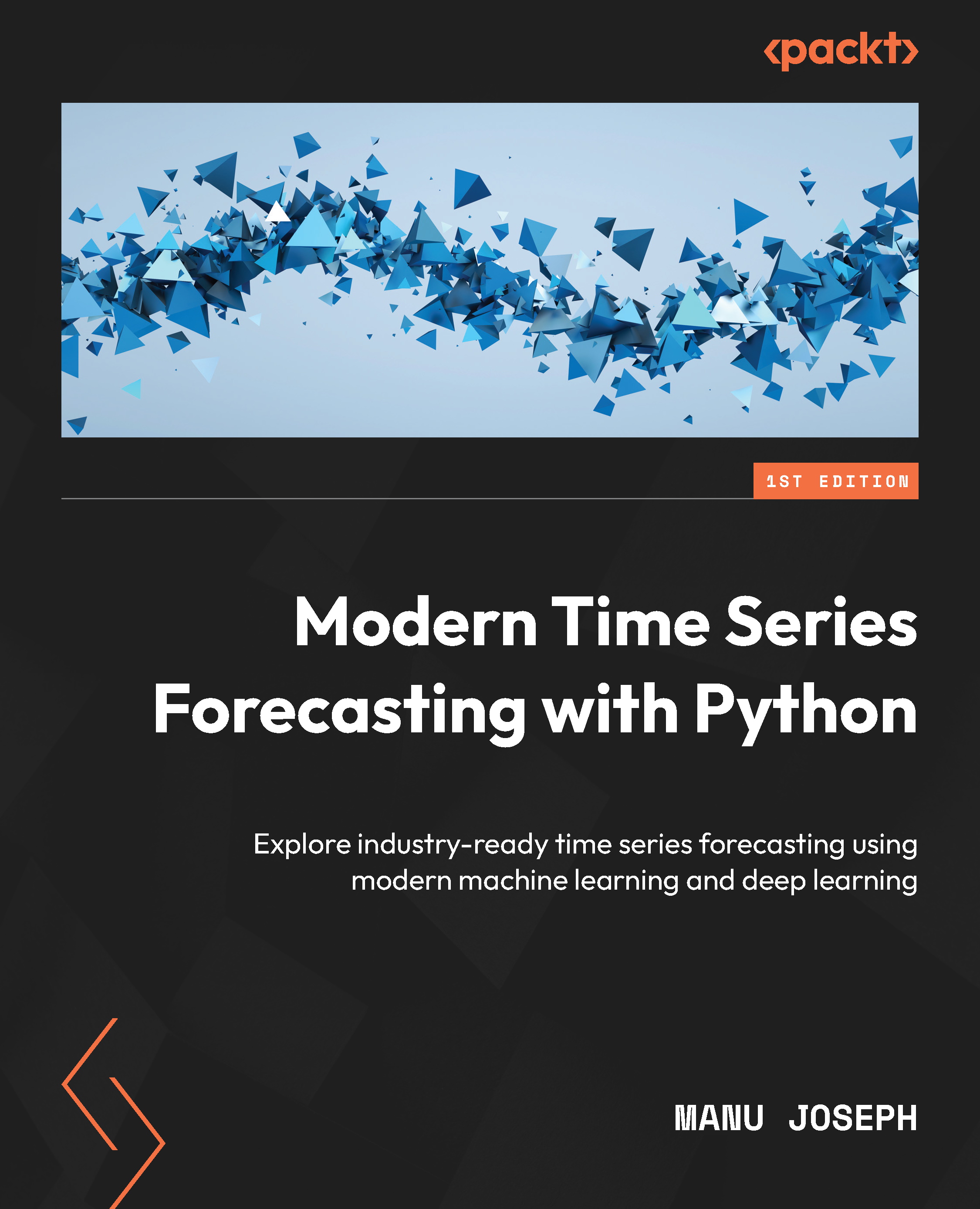Overview of this book
We live in a serendipitous era where the explosion in the quantum of data collected and a renewed interest in data-driven techniques such as machine learning (ML), has changed the landscape of analytics, and with it, time series forecasting. This book, filled with industry-tested tips and tricks, takes you beyond commonly used classical statistical methods such as ARIMA and introduces to you the latest techniques from the world of ML.
This is a comprehensive guide to analyzing, visualizing, and creating state-of-the-art forecasting systems, complete with common topics such as ML and deep learning (DL) as well as rarely touched-upon topics such as global forecasting models, cross-validation strategies, and forecast metrics. You’ll begin by exploring the basics of data handling, data visualization, and classical statistical methods before moving on to ML and DL models for time series forecasting. This book takes you on a hands-on journey in which you’ll develop state-of-the-art ML (linear regression to gradient-boosted trees) and DL (feed-forward neural networks, LSTMs, and transformers) models on a real-world dataset along with exploring practical topics such as interpretability.
By the end of this book, you’ll be able to build world-class time series forecasting systems and tackle problems in the real world.



 Free Chapter
Free Chapter

 timesteps,
timesteps,  , of a time series,
, of a time series,  , where
, where  . Most real-world applications of time series forecasting demand multi-step forecasting, whether it is the energy consumption of a household or the sales of a product. This is because forecasts are never created to know what will happen in the future, but to take some action using the visibility we get. To effectively take any action, we would want to know the forecast a little ahead of time. For instance, the dataset we have been using throughout the book is about the energy consumption of households, logged every half an hour. If the energy provider wants to plan its energy production to meet customer demand, the next half an hour doesn’t help at all. Similarly, if we look at the retail scenario, where we want to forecast the sales of a product, we will want to forecast a few days ahead so that we can purchase necessary goods, ship them to the...
. Most real-world applications of time series forecasting demand multi-step forecasting, whether it is the energy consumption of a household or the sales of a product. This is because forecasts are never created to know what will happen in the future, but to take some action using the visibility we get. To effectively take any action, we would want to know the forecast a little ahead of time. For instance, the dataset we have been using throughout the book is about the energy consumption of households, logged every half an hour. If the energy provider wants to plan its energy production to meet customer demand, the next half an hour doesn’t help at all. Similarly, if we look at the retail scenario, where we want to forecast the sales of a product, we will want to forecast a few days ahead so that we can purchase necessary goods, ship them to the...